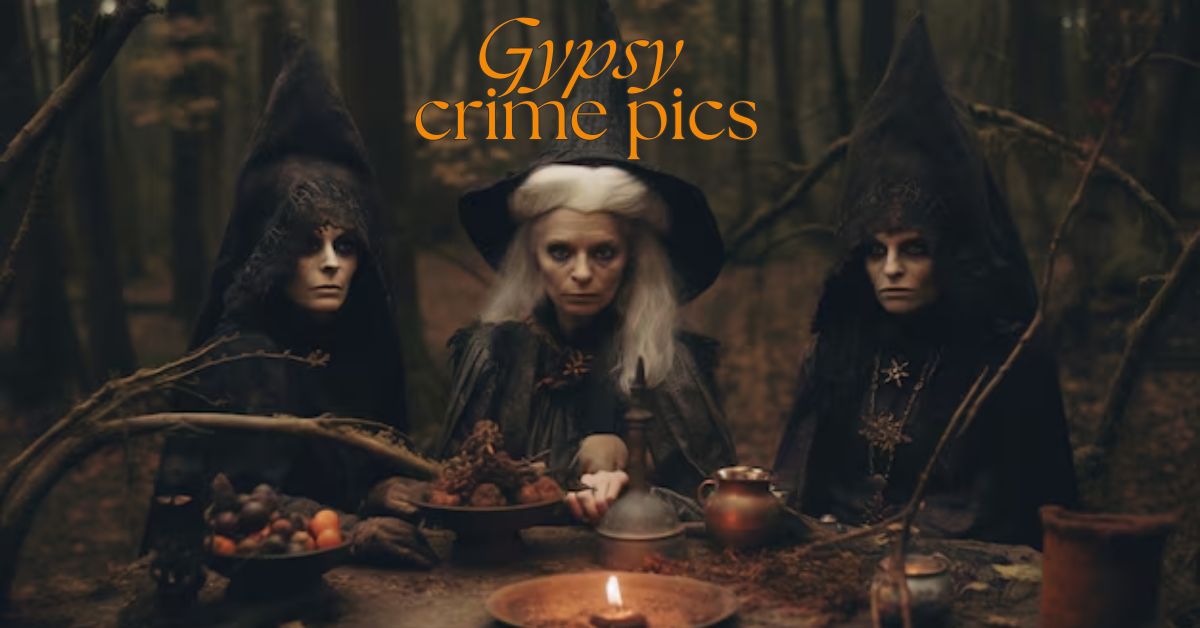When we think of photography, the first things that often come to mind are picturesque landscapes, family portraits, or moments of pure joy frozen in time. Yet, behind the lens of crime photography lies a grittier, darker tale that delves deep into the shadows of society. One such corner is the portrayal of Romani or “Gypsy” Gypsy Crime Pics. These images don’t just capture crime scenes—they unveil a cultural narrative, shaped by prejudice, misunderstanding, and a history filled with complex relationships.
The Power of Crime Photography
Crime photography isn’t merely a method to document criminal events. It’s an art form that can tell compelling stories, challenge perceptions, and force society to confront uncomfortable truths. In the case of Gypsy crime photography, it walks the fine line between capturing reality and reinforcing harmful stereotypes.
What Is Crime Photography?
Crime photography, often referred to as forensic photography, is used by law enforcement to capture scenes, victims, suspects, and evidence in a manner that can later be analyzed or used in court. However, in the broader context of media and society, it serves to evoke emotions and reactions from the public. When these photos involve the Romani community, they often evoke complicated, sometimes negative, feelings that perpetuate a divisive narrative.
A Glimpse Into the Romani Culture
The Romani, or Gypsies as they are often called, are a nomadic ethnic group with roots in Northern India. Over centuries, they have migrated through Europe and the Americas, facing deep-rooted prejudices along the way. While modern media portrays Gypsy crime as a significant issue, it’s essential to differentiate between factual events and societal biases.
Crime photography involving the Romani people often reflects not just criminal actions but centuries of systemic discrimination. These photos can either reinforce harmful stereotypes or challenge viewers to question the bias they may unconsciously harbor.
The Evolution of Gypsy Crime Photography
Crime photography, particularly involving marginalized communities, has evolved significantly over the last century. From grainy black-and-white pictures to high-resolution digital images, the tools have changed, but the underlying narratives remain strikingly familiar.
Early Days: Fueling Stereotypes
In the early 20th century, crime photos of Romani people were used in newspapers and police files to sensationalize “Gypsy crime waves.” These photos often depicted Romani men and women being led away by law enforcement, perpetuating the image of an unruly, criminal society. The camera lens, in these instances, was far from neutral—it actively participated in shaping the public’s opinion of the Romani.
The Role of Media in Framing the Narrative
Modern media, with its vast reach, plays an even larger role in framing these narratives. Tabloid headlines often accompany crime photos involving Romani people, playing on fear and exoticism. These images are powerful—they create a visual story of criminality that sticks in the minds of viewers. Even when the crime rate within the Romani community isn’t statistically higher than in other communities, the media portrayal creates an impression otherwise.
Key Crime Photos That Shaped the Narrative
Several high-profile crime photos have had lasting impacts on how the Romani community is perceived globally. Let’s delve into some of the most notable images and their effects.
The Arrest of a Romani Family in Paris, 1958
A black-and-white photo taken in 1958 in Paris showed a Romani family being arrested under suspicion of petty theft. The image of children clinging to their mothers while surrounded by police officers painted a stark image. Though no major crime was committed, this photograph was widely circulated, contributing to the stereotype of Gypsies as thieves and wanderers.
The Hungarian Border Crossings, 2015
During the refugee crisis in 2015, numerous crime photos emerged from Hungarian borders. Several images captured Romani people attempting to cross into Western Europe. While the photos were framed as depicting crime, in reality, these people were seeking asylum. The visual framing of these individuals as criminals distorted the narrative and added to the ongoing stigma.
Pickpocketing in Rome, 2010
A viral image from 2010 showed a young Romani girl pickpocketing a tourist in Rome. While the image became symbolic of “Gypsy crime,” it was rarely accompanied by context—poverty, marginalization, and lack of opportunities often push individuals into petty crimes. The lack of this background information skewed the public’s perception of the Romani as an inherently criminal group.
The Ethics of Crime Photography: Where Do We Draw the Line?
While crime photos can offer compelling evidence or insights, there is an ethical line to be considered, especially when dealing with marginalized communities. Photography can easily become exploitative, turning real human experiences into sensationalized news stories that promote harmful stereotypes.
Are We Exploiting the Victims?
One of the main ethical dilemmas surrounding Gypsy crime pics is the potential exploitation of the people involved. Often, photos are taken without consent, and the subjects are unable to control how they are portrayed in the media. The sensationalization of these images dehumanizes individuals, reducing them to mere props in a larger societal narrative.
Photography and Cultural Sensitivity
Romani people have a long history of being vilified and exoticized by the media. Crime photography is just one way that this vilification manifests. Photographers and journalists must approach this subject matter with a deep understanding of the cultural implications, ensuring they don’t reinforce harmful stereotypes for the sake of a gripping image.
Changing the Narrative Through Photography
While much of Gypsy crime pics has been used to perpetuate negative stereotypes, there are efforts to change this narrative. Photographers and activists are working to capture more authentic images of Romani life, focusing on their culture, struggles, and contributions to society rather than criminality.
Shifting the Focus
Rather than focusing on Gypsy Crime Pics, many modern photographers have chosen to highlight the resilience and beauty of Romani communities. By doing so, they challenge the long-standing stereotypes and present a more balanced view of their lives. These images offer a counter-narrative to the one that has dominated crime photography for so long.
Using Photography to Foster Understanding
Photography, when used correctly, can be a powerful tool for fostering empathy and understanding. Rather than reinforcing existing prejudices, it can break down barriers and show the humanity of those who have long been vilified. In the case of Gypsy crime photography, the future lies in capturing moments that inspire understanding, rather than fear.
The Role of Social Media in Changing Perceptions
Social media platforms have played a significant role in changing how we view marginalized communities. Today, Romani individuals and allies use platforms like Instagram and Twitter to share their own stories and images, bypassing traditional media outlets.
Giving a Voice to the Voiceless
By taking control of their own narrative, Romani individuals are able to challenge the stereotypes that have been perpetuated by crime photography for so long. Social media offers a platform where they can share their experiences, struggles, and triumphs without the filter of mainstream media.
Reclaiming the Lens
In a world where photography shapes our perceptions, it’s vital that marginalized communities like the Romani are given the opportunity to reclaim the lens. By controlling how they are portrayed, they can shift the narrative from one of criminality to one of resilience, culture, and humanity.
Conclusion:
Gypsy crime pics have played a significant role in shaping public perceptions of the Romani community. While it has often been used to reinforce negative stereotypes, the power of the lens can also be used for good. By shifting the focus to stories of resilience and humanity, we can begin to break down the harmful narratives that have persisted for centuries.

